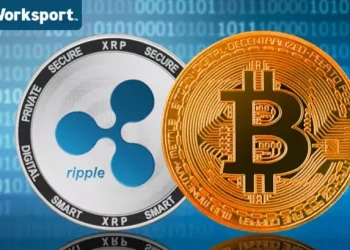Coinbase and Circle, formerly connected through the Centre Consortium overseeing the issuance of the USD Coin (USDC), the second-largest stablecoin globally, have taken a new trajectory. Coinbase’s recent acquisition of a minority stake in Circle has prompted the dissolution of the consortium, signaling a significant shift in their collaborative dynamic.
The narrative traces back to 2018 when Coinbase and Circle initiated the Centre Consortium, a joint effort that culminated in the successful launch of the USDC in October of that year, with Coinbase focusing on distribution aspects.
Circle, a prominent player in the stablecoin sphere valued at $124.1 billion, introduced its own US dollar-pegged stablecoin in 2018. However, the company’s plans to go public via a special purpose acquisition company were put on hold in December. The Centre Consortium’s dissolution aligns with Circle’s pivotal role in the stablecoin sector, with USDC constituting approximately 21% of the aggregate stablecoin market.
Circle CEO Jeremy Allaire and Coinbase CEO Brian Armstrong jointly conveyed, “As part of this new chapter, Coinbase and Circle have established a fresh agreement. Reflecting Coinbase’s unwavering belief in the foundational significance of stablecoins within the broader cryptocurrency economy, Coinbase is acquiring an equity stake in Circle. Consequently, Centre will cease to operate as an independent entity, and Circle will continue as the issuer of USDC, assuming all Centre governance and operational responsibilities in-house.”
Recent times have seen heightened regulatory scrutiny directed at stablecoins like USDC, spurred by incidents such as the terrraUSD collapse. Notably, Circle’s token experienced a detachment from its dollar peg in March, plummeting to an unprecedented low of $0.8 per coin. This decline followed Circle’s disclosure that nearly 9% of its $40-billion USDC reserves were entangled with Silicon Valley Bank.
However, Circle managed to regain stability, restoring the peg, as the firm assured investors of its commitment to maintaining the peg despite exposure to the failed bank. Circle further articulated its contingency plan, asserting that in the event Silicon Valley Bank fails to fully restore deposits, any deficit in the assets underpinning its stablecoin would be compensated using corporate resources, potentially involving external capital. Subsequently, Circle regained access to the $3.3 billion that had been locked with the insolvent financial institution.
The acquisition of the stake by Coinbase not only signifies a pivotal moment for the two industry giants but also reflects the evolving landscape of stablecoins in the face of mounting regulatory challenges and market exigencies.

















